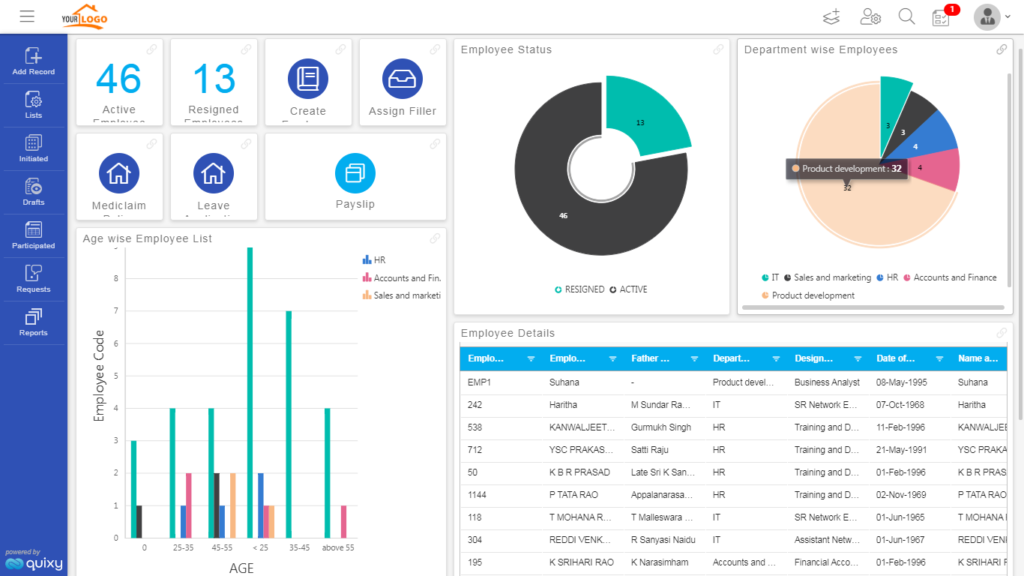No-Code Solutions for Open Platform Data Source Creation: Develop Without Coding Abilities
No-Code Solutions for Open Platform Data Source Creation: Develop Without Coding Abilities
Blog Article
A Comprehensive Guide to Carrying Out Scalable Data Sources Without the Requirement for Coding Experience
In the contemporary landscape of data management, the ability to execute scalable databases without coding competence is becoming progressively necessary for companies of all dimensions. This overview aims to light up the process, concentrating on easy to use devices and user-friendly interfaces that demystify database configuration. By analyzing crucial functions, efficient methods for execution, and best practices for recurring administration, we will resolve just how also non-technical individuals can confidently navigate this complicated surface. What are the vital components that can truly encourage these individuals to take advantage of scalable databases properly? The responses may redefine your approach to data management.
Recognizing Scalable Databases
In the world of modern information management, scalable data sources have actually arised as an important solution for companies seeking to manage increasing quantities of information effectively. These data sources are developed to suit growth by enabling the seamless addition of sources, whether through straight scaling (adding a lot more makers) or vertical scaling (upgrading existing equipments) This flexibility is crucial in today's fast-paced electronic landscape, where information is generated at an extraordinary rate.
Scalable databases commonly utilize dispersed designs, which make it possible for data to be spread throughout numerous nodes. This distribution not only improves performance however additionally provides redundancy, guaranteeing information schedule also in case of equipment failures. Scalability can be an important variable for various applications, including ecommerce platforms, social networks networks, and big information analytics, where individual need can rise and fall significantly.
Additionally, scalable databases commonly feature robust data consistency designs that balance performance and dependability. Organizations needs to consider their specific requirements, such as read and write speeds, data integrity, and fault resistance when picking a scalable database service. Ultimately, understanding the underlying principles of scalable databases is essential for businesses aiming to prosper in a significantly data-driven globe.
Secret Functions to Search For
When assessing scalable databases, several essential attributes are vital to making sure ideal performance and integrity. Firstly, take into consideration the style of the data source. A distributed style can improve scalability by enabling data to be saved throughout several nodes, facilitating smooth information access and handling as demand increases.
Another critical attribute is data dividing, which allows efficient monitoring of huge datasets by separating them into smaller sized, a lot more manageable pieces (no-code). This technique not only boosts performance but likewise simplifies source allocation
In addition, search for robust duplication capacities. This function ensures data redundancy and high availability, reducing downtime during maintenance or unanticipated failings.
Performance surveillance devices are also essential, as they supply real-time insights into system wellness and operational effectiveness, permitting timely adjustments to preserve optimal efficiency.

User-Friendly Database Devices
Simplicity is an important element in the layout of easy to use database tools, as it boosts availability for individuals with differing degrees of technical proficiency. no-code. These devices prioritize intuitive user interfaces, allowing customers to produce, manage, helpful site and inquiry databases home without needing extensive programming expertise
Secret attributes usually include drag-and-drop performance, visual information modeling, and pre-built templates that improve the setup procedure. Such tools often use guided tutorials or onboarding processes that promote individual interaction and lower the learning curve. Additionally, seamless combination with preferred data sources and services makes certain that individuals can conveniently import and export data, additionally simplifying operations.

Moreover, durable support and area sources, such as forums and documentation, boost the individual experience by providing aid when needed. Overall, straightforward database devices encourage companies to harness the power of scalable databases, making information management obtainable to everybody entailed.
Step-by-Step Application Overview
Exactly how can organizations properly execute scalable data sources to meet their expanding data requirements? The procedure begins with recognizing particular information requirements, consisting of the quantity, variety, and rate of data that will be refined. Next off, organizations must evaluate easy to use data source tools that use scalability attributes, such as cloud-based services or managed data source solutions.
Once the ideal device is selected, the next action entails configuring the database atmosphere. This consists of establishing up instances, defining individual approvals, and establishing data frameworks that line up with organization purposes. Organizations should then migrate existing data right into the brand-new system, ensuring information stability and minimal interruption to operations.
Post-migration, carrying out thorough testing is essential; this consists of performance testing under different lots problems to ensure the system can deal with future development - no-code. Additionally, it is essential to train personnel on the database administration interface to assist in smooth usage
Best Practices for Administration
Efficient monitoring of scalable data sources needs a strategic technique that focuses on recurring surveillance and optimization. To attain this, companies need to apply durable monitoring tools that provide real-time understandings right into data source performance metrics, such as query response times, source usage, and deal throughput. On a regular basis assessing these metrics can assist determine bottlenecks and locations for renovation.

Normal back-ups and disaster healing plans are important to guard information integrity and availability. Establishing a regular for examining these back-ups will make certain a dependable healing process in situation of an unanticipated failing.
Furthermore, efficiency tuning need to be a constant procedure. Adjusting indexing approaches, optimizing questions, and scaling resourcesâEUR" whether vertically or horizontallyâEUR" will certainly aid maintain ideal efficiency as usage needs evolve.
Finally, fostering a culture of expertise sharing among staff member will certainly enable constant understanding and adaptation, making sure that the management of scalable databases continues to be efficient and efficient over time.
Conclusion
In verdict, the execution of scalable databases can be successfully attained without coding knowledge via the application of instinctive user interfaces and user-friendly devices. By sticking to the laid out strategies for setup, information movement, and efficiency testing, individuals can navigate the complexities of database administration easily. Stressing ideal practices for continuous maintenance and partnership additional improves the capability to handle scalable databases effectively in anonymous a quickly developing data-driven atmosphere.
In the contemporary landscape of data management, the ability to implement scalable databases without coding knowledge is ending up being progressively necessary for organizations of all dimensions.In the world of modern-day information administration, scalable data sources have emerged as an essential solution for companies looking for to manage raising quantities of details efficiently.Additionally, scalable databases often include durable information consistency models that stabilize performance and reliability.Just how can companies efficiently execute scalable data sources to satisfy their growing information requirements? Next, companies must assess user-friendly data source tools that offer scalability features, such as cloud-based remedies or took care of data source solutions.
Report this page